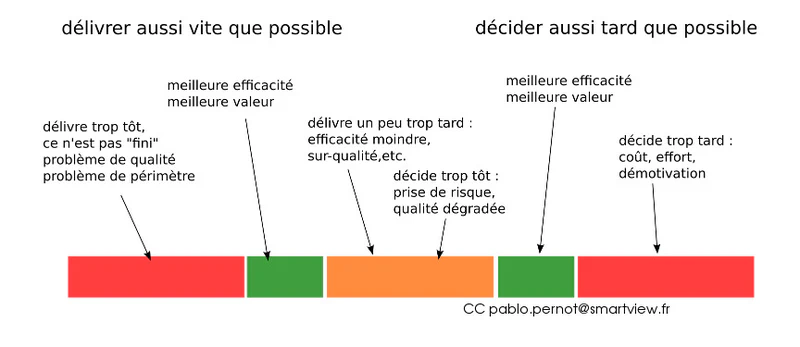In this short post I’d like to highlight a fundamental element of the agile approach: the notion of rhythm. An iteration is like a staff in music: it has its velocity (4/4 for example: meaning 4 quarter notes in a staff, or 8 eighth notes it’s the same!, well you clearly see the analogy*). Moreover, if Ken Schwaber often compares Scrum & chess: simple rules, complex strategy and game; we can do the same with music: 7 notes: endless possibilities.
In short, it’s about having a cadence. Within it, two important elements: a certain anticipation, an effective delivery. I’m translating here two concepts highlighted by Mary & Tom Poppendieck and specific to agility: “deliver as fast as possible”, and “decide as late as possible”. You need to know how to juggle to avoid too early or too late (in your deliverables, in your expression of needs, etc.). If you’re not in the rhythm you degrade quality or you provide too much effort for little result (what I would call over-quality). The whole range of artifacts proposed by agility is there to avoid this: sprint, timeboxes, dailyscrum, user stories, etc.
In the diagram below (click on it twice to see it enlarged…) I try to highlight in a macro way the negative effects in the project cycle. In red what generates the most problems, in green what offers the most value, efficiency. All the difficulty residing in aiming for the green zones without falling into the adjacent red zones. It’s often poorly perceived but I want to specify: experience plays a key factor, a novice being able to play across the entire length of the bar…

* actually I see so many analogies between music and scrum (or more generally agility) that I’m going to dedicate a post to it…
** I still recommend, always, the excellent “Lean Software Development, an agile toolkit”